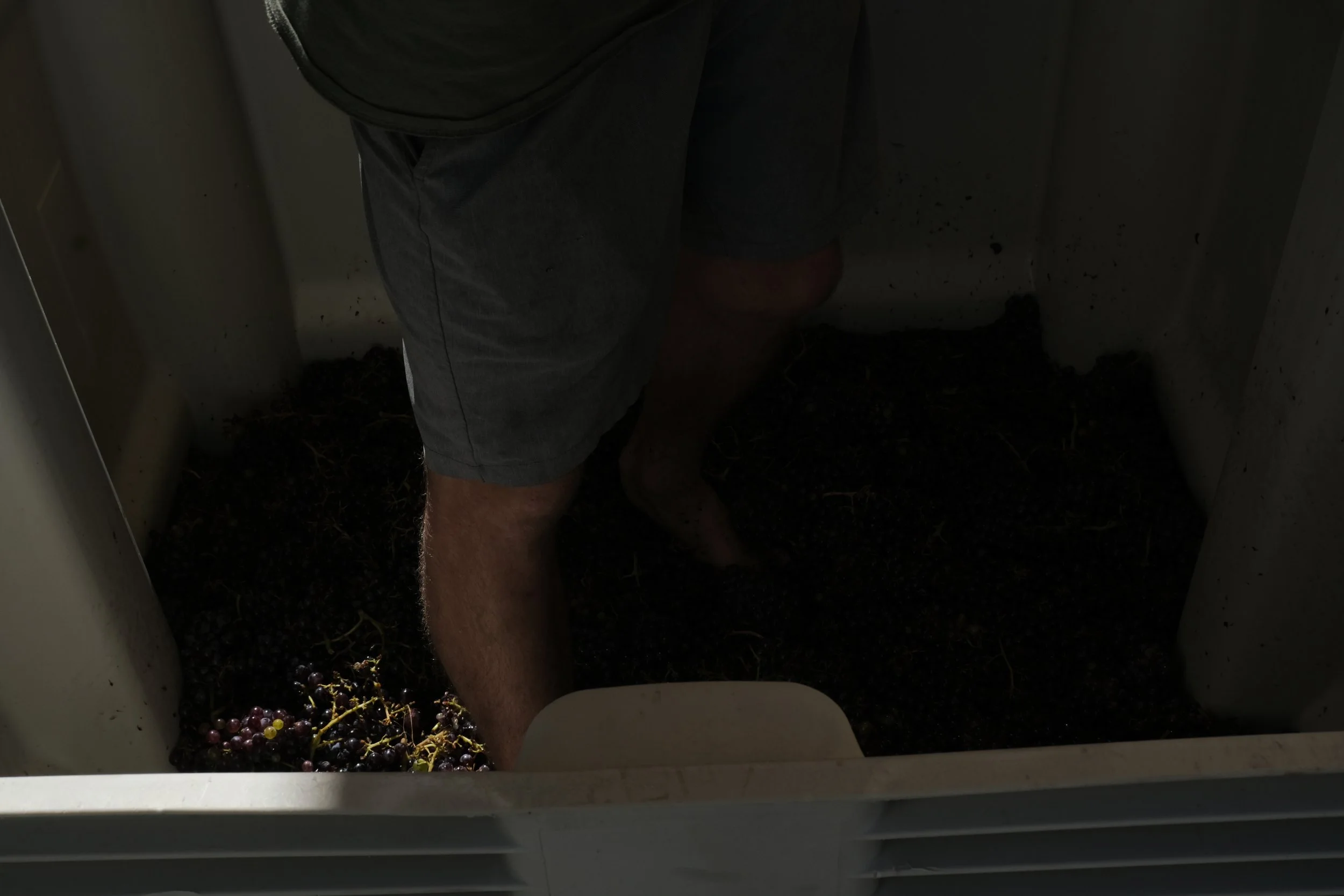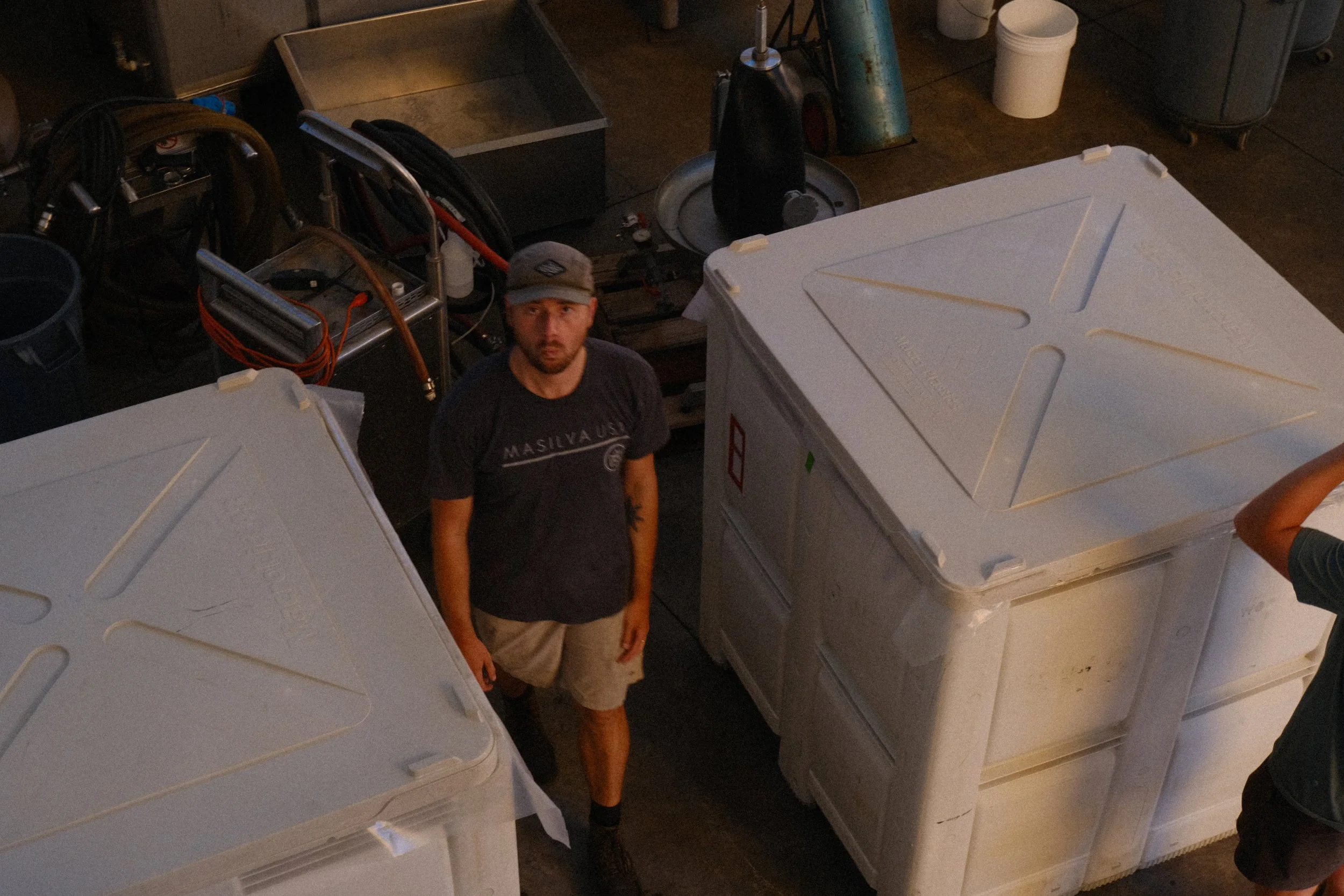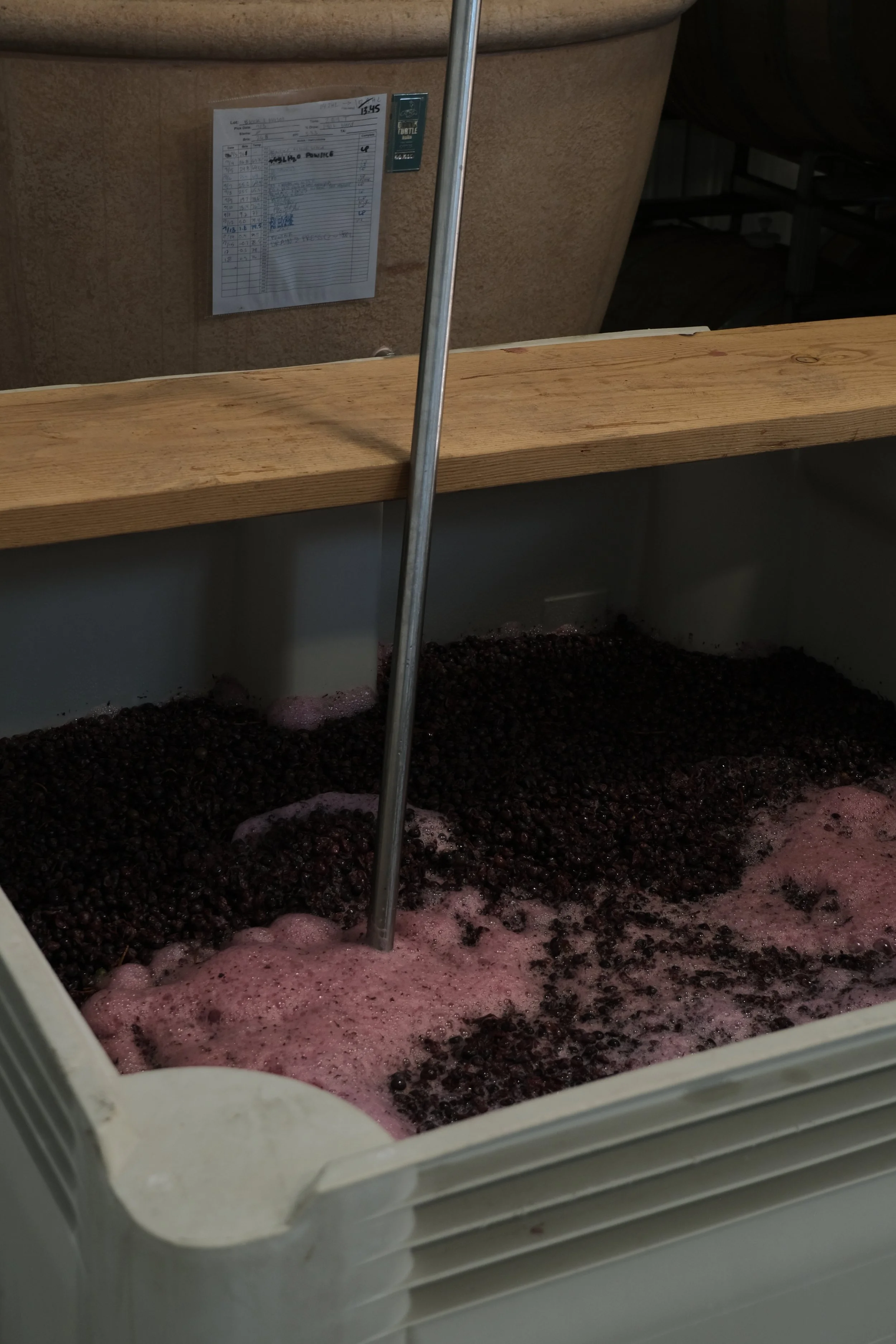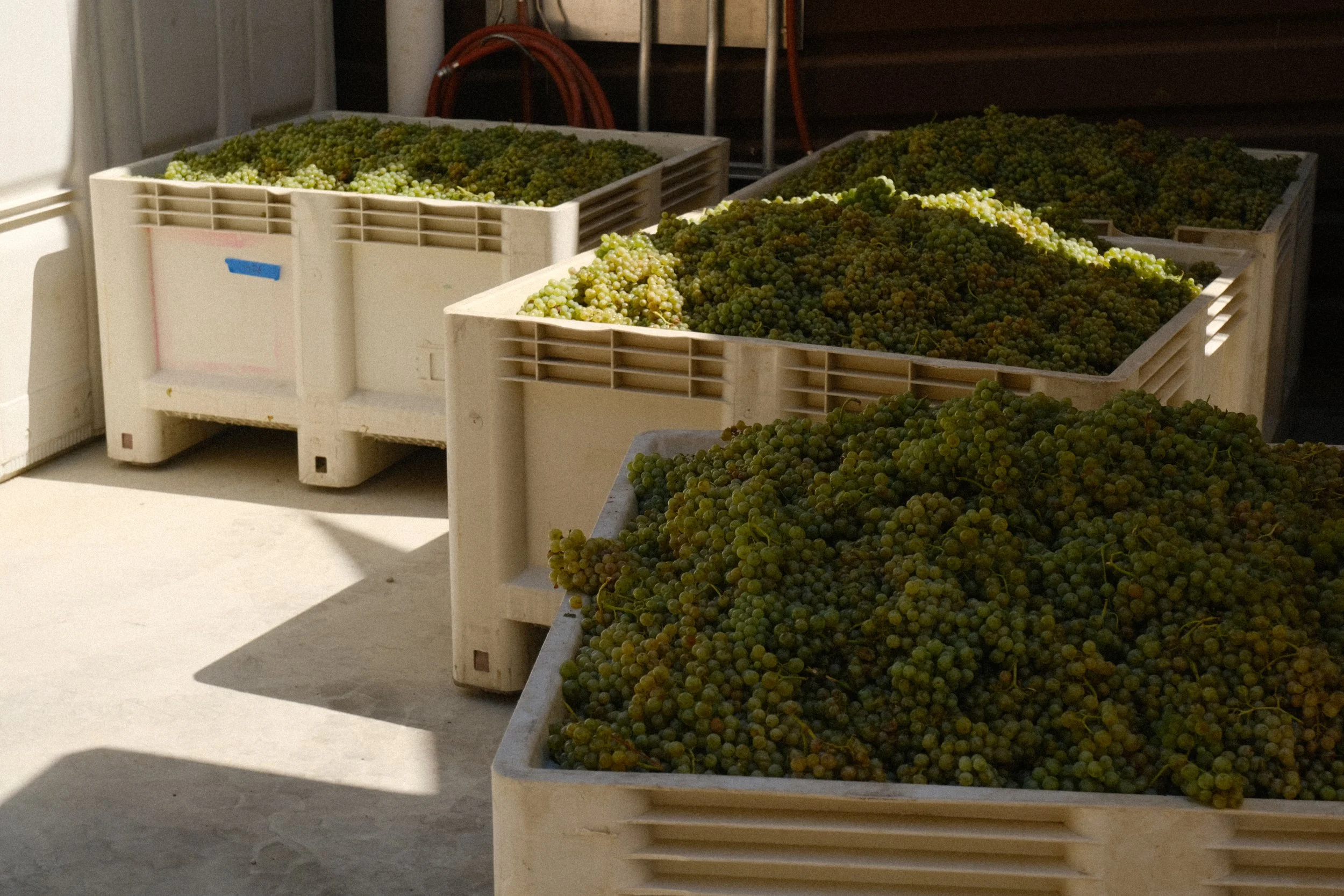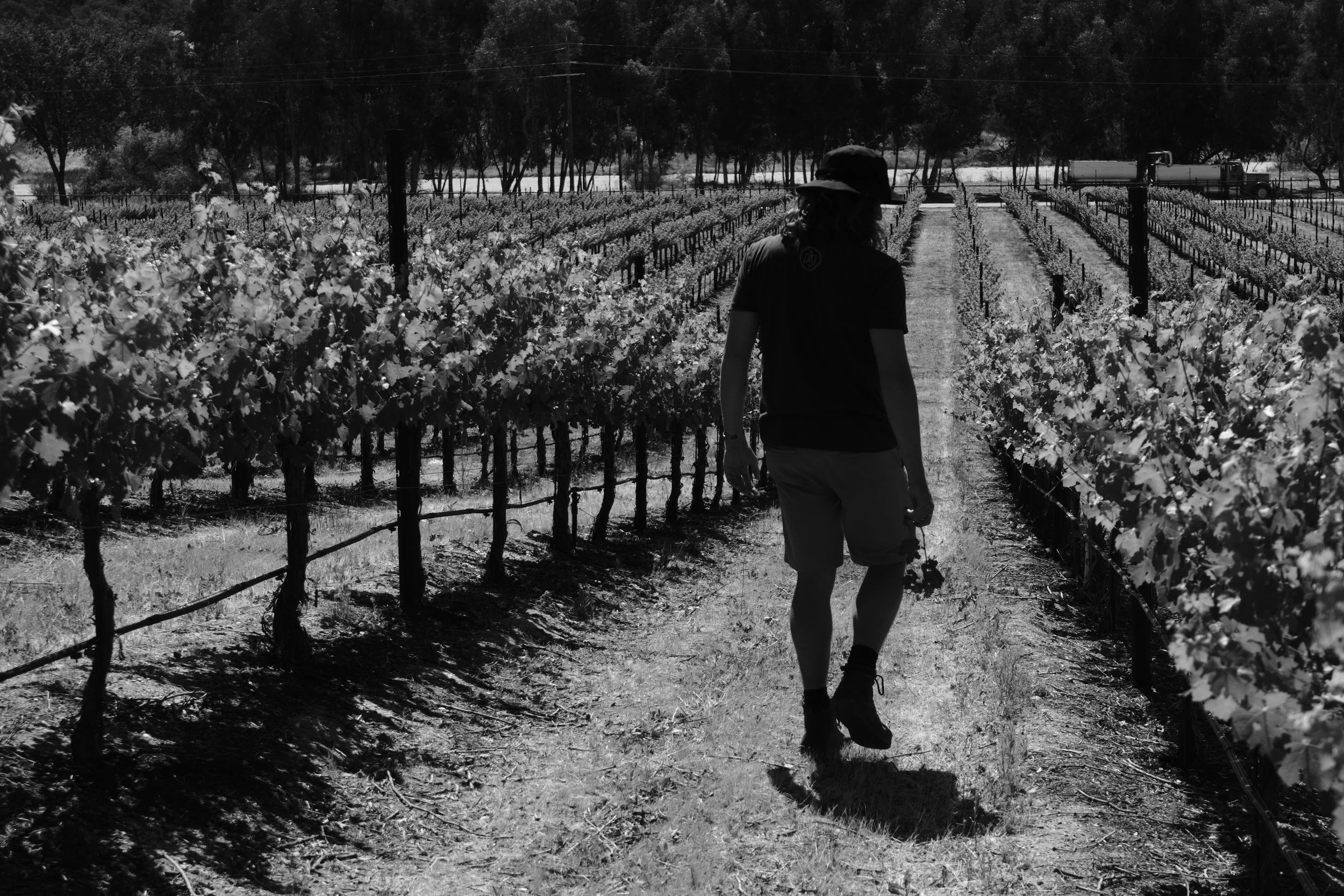Treading Towards Transcendence
“Wow, so you actually crush the grapes with your feet?”
“Yeah”
“Like Lucy and Ethel?”
“Yeah, just like I Love Lucy”
“Do you wash them?”
“Sometimes”
“So your feet are in this wine that I’m drinking right now…?”
The dirty secret to making wine is that it is a lot simpler than us winemakers make it out to be. People are always in awe when they come into the cellar during harvest, but the reality is that we are just putting bits of fruit into tanks and turning their sugars into alcohol. That’s it. Granted, there are complicated things that can be done, but the more I make wine, the less interested I am in those. Case in point: crushing grapes by foot.
Treading grapes may sound rudimentary, especially considering all of the winemaking technology we have now. But I have always crushed grapes by foot. When I was at Denner, we literally stomped all 400 tons. It’s a lot of fun at first, but then it’s just a workout. Picture walking through waste deep water for 10 minutes.
Sure, we could use a machine to crush the fruit, but that’s boring. The way I look at it, there are a few reasons we foot tread, one practical and one emotional, as I will attempt to outline below.
Let’s start with the boring part, aka the pragmatic scientific explanation. When we stomp, especially on whole cluster grapes (perhaps another blog post for the future), we get a great mixture of broken berries and whole berries. Picture my foot sinking down to about the knee in a tank that is 7 feet tall. Those berries on the bottom of the tank are not going to break. As a result, during fermentation, we get a nice mixture of whole berry fermentation and broken berry. If those whole berries are down super far, they are only in the presence of juice and eventually CO2. This is considered an anaerobic environment, meaning without oxygen. Most fermentation is considered aerobic and carried out by a yeast known as Saccharomyces, however in this case, whole berries go through a bacterial fermentation that is anaerobic known as carbonic maceration. This whole berry fermentation gets a lot of fruitiness and floral characteristics without much texture, while the aerobic fermentation brings more tannin and structure. If I ran the fruit through a crusher and had no whole berries, I would lose that fruity element and therefore lose complexity.
There is a deeper, more interesting explanation though, and one that I personally prefer. There are certain wines in the world that just resonate with me. Anyone that drinks wine will understand this. At some point during one’s wine journey, we move away from the “wow I love this wine just as a wine” to analyzing and overanalyzing it to try and decide if we love it. “What is the story?” “What is the pH? TA?” “Is that pumpover or punchdown?” I am incredibly guilty of this, and can definitely think my way into liking or disliking a wine. Yes, knowledge is power, but in this case, knowledge stands in the way of enjoyment. In this case, naivete leads to a deeper source of appreciation.
This gets to a critical point that I have been thinking a lot about. In the age of information, we are rarely left to our own autonomy and rarely formulate theories about the world on our own accord. Everything has to be proven. Everything has to be deduced, and as a result, reduced as well. The possibilities are not endless, they are set in stone and disseminated. And as a result, life feels a little black and white.
The thing about art though, is that one person’s interpretation is not the same as someone else’s. Wine is very much art. So why should someone else’s opinion of a bottle influence my opinion of that bottle? Why is a pumpover better than a punchdown? Or why does the level of ripeness need to match everyone else’s? All that should matter is how I do it. It would be crazy to say that one person’s journal entry is better or worse than mine.
As a result, I have been trying my best to unlearn a lot about wine.
My enjoyment of the beverage was so much more pure and innocent when I knew less. It struck me in a deep way that rattled my identity. And this purity is the key. The less fluff we put into it - the less we interfere during the production process - and instead, focus our interventions on the source (i.e. vineyard), the more direct the throughline, and the more we can get to the essence.
For me, this is the definition of transcendence - when we allow an experience grounded in the material world to cross over and touch us in a spiritual way.
From the outside, someone praying at church is simply sitting with their eyes closed and hands clasped. From the inside, they are communing with the divine.
Intention
Emotion.
Wines that are grown with the right intention and made with the right intention generally carry with them a certain consciousness that transcends the objective flavors. It’s the “I put my nose in the glass and take a sip and am at a loss for words” kind of experience. For me, the intention of whoever is making the wine is transferred to the product itself, and when I drink it, the raw energy becomes a part of my consciousness.
There’s a purity in wines made in this way. They are still complex, but their essence has been distilled down to a more simple form. The next step for me was to bridge the gap from consumer, to producer. I get tremendous amounts of fulfillment out of consuming wines of higher vibration, but making them takes the transcendence to a whole new level. Where to start? Less winemaking. There is a real beauty in a pared down minimalist approach. Think Japanese architecture. And by making wines in this way, my spirit accesses a different realm - one that is connected to Mother Nature because I am physically touching her. This realm sees a melding of bodies. There is a oneness in the existence of the plants and the fermentation and the wine and myself. We are working together to achieve a goal. There is a new lifeform being created right before me. This is my higher power.
And this, this is why foot treading is important to me. My hope is that by focussing on this process, I can imbue the wines with a certain consciousness, which is then transferred to you, the consumer. What you do with that energy is up to you, but I hope you put it back into the world in a positive way.
Below is a step by step recipe for how I make wine:
Do less. Just start with this perspective. It’s very easy to get excited and want to do a ton right away. I’ve found this doesn’t let the wine develop its foundational personality. You can mold character traits, but the personality needs time to develop.
Grapes are placed in a container. Misty Oaks fruit is generally de-stemmed whereas ídola fruit tends to favor whole-cluster. Whole clusters are placed on the bottom, destemmed fruit is layered on top. Sometimes I’ll crush the bottom clusters, but not always. The top fruit is gently crushed by foot. Gentle is the key. Maybe sink down to the ankle.
The container is placed in a cold room, dry ice over the top, and sealed up.
Days 2-5 are light foot treading. Just get the top of the berries wet. Fermentation will begin. Move to a warmer area. ALWAYS spray off the inside of the tank to keep clean.
We progress to days 5-7 and brix drop to around 15 and temperature is about 72 degrees. Now is when I will decide how to proceed depending on the ferment.
If I taste tannin and like it, I’ll do a light punchdown and slowly break whole berries to release sugar and increase surface area. This also stimulates the yeast, increasing metabolism and temperature, which in turn increase the polymerization of tannin and help bind up color.
Other ferments might see a bigger/ deeper punchdown to really macerate and extract early. I like early extraction. Late extraction tastes bitter and disjointed to me. MOV Cabernet sees this. That fruit does not have a lot of tannin and I want to rough it up a bit when it’s young to give it some character.
I may also choose to use a pump and pump-over the wine, though I am doing this less and less. The pump helps to slow the extraction and give the ferment some air. However, because I am doing a lot of whole berry fermentation, the amount of extraction is super low to begin with, so additional slowing is unnecessary.
When I feel the wine has the right type and amount of tannin (this is 100% based on taste), I will take it one more day, then press. I’ve found that this is a blind spot for me. The wine may taste great, but we need a little more binding or a little more weight. One extra day gives this.
Wine is drained, and pressed to another tank. Because there is a lot of whole berry, this releases sugar, and the pressed wine actually gains sweetness. I will allow it to finish fermenting in the tank, then go to barrel to age and rest. Voila. Wine, made.

